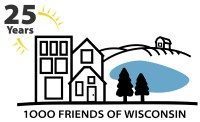Healthy Communities Strategies
Policies and projects related to incorporating healthy living into community design – whether by built form, programs, education, etc. in an effort to reduce trends in poor nutrition, inactive lifestyles, chronic diseases, such as obesity and heart disease, and other negative health risk factors.
Policies Affecting Multiple Program Areas
• Adopt a resolution that promotes Health in All Policies at the community level (e.g., HEAL Resolution). Include that educational campaigns supporting a program covered by the resolution are appropriately targeted to all of the populations addressed by the program.
• Establish a Health Impact Assessments policy, including when an assessment is required and its scope.
Planning
• Add health policies in 1 or more of the community’s plans, including the comprehensive plan, long-range transportation plan, bicycle/pedestrian plan and open spaces recreation plan (embedded or stand-alone chapter) or develop a comprehensive, community wide wellness plan.
• Site schools in the Comprehensive Plan for accessibility with existing or new bicycle and pedestrian infrastructure.
• Encourage the formation and/or support of Neighborhood Improvement Districts (NIDs), Neighborhood Development Corporations, or other similar types of neighborhood reinvestment and enhancement strategies in plans or policies.
Healthy Food Access
• Implement strategies (urban agriculture, community gardens on public land, diversified farmer’s markets, expanded traditional retail food options, ordinances to allow urban chickens and beekeeping and vegetable gardening in rights of way) that help increase fresh food access in the community, in particular in areas with food insecurity (e.g., “food deserts” and “food swamps”), including access by EBT and WIC participants.
• Create a Food Systems Plan that addresses the production, distribution, value-added, marketing, end-market, and disposal of food, and charge a new or existing governmental body to oversee the plan’s implementation.
Physical Activity and Access
• Provide an on-street and/or off-street trail network connecting recreational areas in the community (e.g. safe routes to parks) and other trip generators, such as shopping malls, ensuring all neighborhoods are included in planning and implementation.
• Encourage pedestrian and bicycle site connections from front door of businesses or apartments to a public sidewalk and/or bike lane ensuring connections to all neighborhoods.
• Provide education and establish programming to encourage physical activity, especially by youth.
• Establish an expanded public transit that serves commuters from all neighborhoods and major parks and recreation facilities,,, and has racks on vehicles for carrying bicycles.
• Require sidewalks in new residential areas and establish a policy for adding sidewalks, as appropriate, in areas built out without sidewalks.
• Implement a Complete Streets policy.
• Provide recreation programs for youth, adults, senior citizens and disabled persons
• Establish a pedestrian safety task force.
Housing
• Adopt ordinances and programs to maintain a healthy housing stock (code enforcement, landlord licenses, volunteer program, truth-in housing disclosure before sale, etc.).
• Allow life cycle or adaptable housing options, such as “aging in place”, accessory dwelling units, Universal or Inclusive Design, Dementia Friendly Communities, Age-Friendly communities etc.
• Establish a program to make housing more affordable.
• Establish a program to address chronic homelessness, such as “permanent housing”.
Crime Prevention and Other Harm Reduction
• Use by policy, ordinance or practice, Crime Prevention Through Environmental Design and active threat planning to make public spaces, such as recreational space, crime free.
• Establish and implement Harm Reduction strategies for alcohol outlet density and sexual oriented establishments (e.g. zoning limitations).
• Adopt an ordinance or policy that requires tobacco-free and e-cigarette free apartments or places limitations on such structures.
• Adopt an ordinance or policy that promotes tobacco-free and e-cigarette free parks and/or public events on local government-owned property.
Climate Change
• Create and implement a climate change action plan that includes a carbon footprint study, and health related components on reducing air pollution from combustion of fossil fuels and responding to heat episodes and flooding, focusing in particular on most vulnerable populations.
Noise
• Adopt an ordinance, including conditional use permits, on noise abatement for various zoning districts.
Employee Health
• Implement a wellness program for employees of the local jurisdiction.
• Encourage or partner with others, such as the Chamber of Commerce, etc., to advance workplace wellness programs within the community.
Placemaking
• Support placemaking at varying scale (neighborhood to major city facility) and permanence (temporary to permanent) through programming, financial support and removal of regulatory barriers to promote healthy living and social capital in the community.
• Adopt form-based codes or similar type design guidelines for healthy active living environments.
Waste Pharmaceuticals
• Establish partnerships to reduce waste pharmaceuticals generated in the community and to efficiently collect remaining wastes to prevent their abuse and entry into solid waste or wastewater.
More Sustainable Communities Strategic Options:
